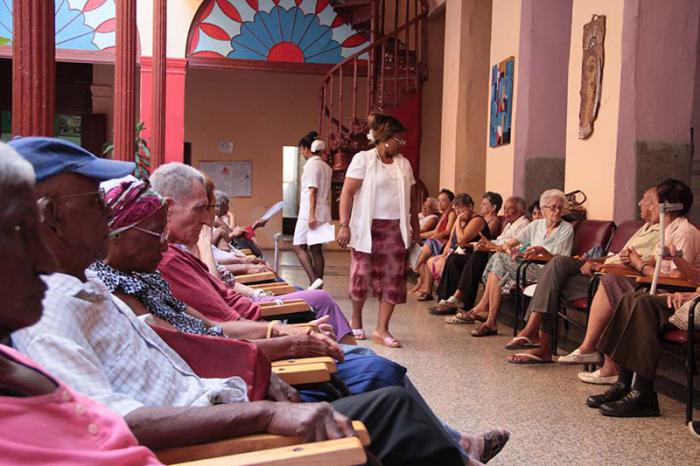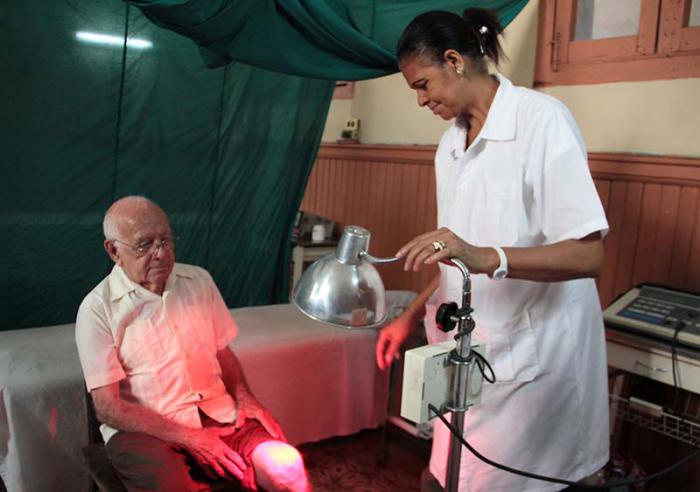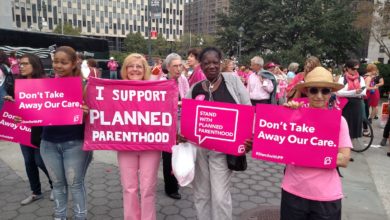The following article is reprinted from the gramma.cu website.
October 13, 2016 10:10:50
Walking the streets of Cuba, one notices the large number of people over the age of 60. According to estimates, this sector represents 19% of the island’s total population; which is why multi-sectoral strategies are being implemented to tackle population ageing.
This phenomenon presents numerous challenges for contemporary Cuban society, after a notable rise in the number of older adults on the island has been seen over the last five years alone, unlike France where it took four centuries for this social problem to arise.
Statistics from 2010 show an increase in the number of people 60 years of age and older and a decline in those under the age of 15, resulting in a shrinking workforce.
The situation is compounded by low birth and high immigration rates among the island’s younger population, including women of childbearing age.
Demographers warn that the Cuban population has reached its peak of 11 million people, and is set to decline from here on.

Ironically, such trends have in large part been a result of the Revolution’s most outstanding achievements, for example the country’s public healthcare system helped to gradually increase the life expectancy of the population from 69 years in the 1960s to 78 today.
Meanwhile, women’s access to education promoted by the social project launched after 1959, also brought with it a decline in birth rates, with Cuban women having an average of 1.5 children, a figure clearly insufficient to reverse population ageing.
Since 2010, Guideline 144 of the Economic and Social Policy of the Party and Revolution has featured a proposal directing all ministries toward tackling this problem, with actions centered on improving older adult’s quality of life, outlined in the Older Adult Attention program.
In regards to the health sector, the initiative focuses on specialized care with medical coverage provided in hospitals, seniors’ community circles, older adult centers, and retirement homes, which aim to strengthen links between this demographic and the rest of the population, while promoting the role of the family as key to their longevity.
As such, the country has 250 Caregivers Training Centers which prepare those responsible for helping and supporting older adults in need of personalized care, due to some kind of impairment. Meanwhile, caregivers have the option of working in either the state or private sector, according to Dr. Alberto Fernández Seco, head of the Ministry of Public Health’s Older Adult, Social Care, and Mental Health department, speaking with Granma International. The expert noted that the ministry is looking to solve social problems by reinserting older adults into the community with the help of full or part-time care facilities, and as such contribute to these individuals’ general development and ensure more productive use of their free time.

“The number of older adults who live alone has risen in recent years. We estimate that for various reasons, 15% of all such individuals lack the support of loved ones; however the nature of the Cuban people means that older adults receive help. They establish an active connection with the community, they seek help from neighbors, who in turn look out for them as they would another family member,” noted the Gerontology Masters graduate.
Seniors’ circles emerged at the end of the 1980s offering members the opportunity to spend a few hours a day partaking in physical exercise in squares and local parks. These groups also organize cultural and recreational activities for participants to enjoy.
Meanwhile, Older Adult Centers are open daily from 8am to 5pm, to individuals whose families are unable to take care of them during the day, returning to their homes in the evening. These people are responsible for themselves and carrying out their usual daily activities.
Fernández Seco noted that country has 274 Older Adult Centers with capacity for 9,393 people, as well as 3,310 daily spots offered in retirement homes. These daily institutions cater to 12,703 older adults across the entire island—with the exception of four municipalities (Mariel, Caimito, Alquizar and Madruga), where work is currently underway to build such facilities.
On the other hand, elderly people living in retirement homes are provided with full time care, where they receive subsidized food and medicine; physiotherapy and rehabilitation services; periodic specialized consultations to treat various pathologies; plus nightwear, clothing, and footwear.
There are 148 of these kinds of institutions located on the island, able to serve 11,771 persons; including 11 managed by religious orders which also receive government funding, as well as food and medical supplies to aid their normal functioning.
Since 2013, Older Adult Centers and retirement homes have been undergoing repair and maintenance works, in fulfillment of Guideline 116 which establishes as well-designed policy for all Central State Bodies with timely follow-up provided by a permanent commission established by the Cuban National Assembly who report on efforts undertaken during ordinary sessions.
Such works have been carried out across 248 or 94% of all Older Adult Centers, with 143 having reached completion. Meanwhile, 139 actions were carried out in 94.5% of all retirement homes, 56 of which have concluded. This has led to an increase in capacities, improved wellbeing and quality of care offered to the country’s older adults.
Professor Fernández Seco described these institutional policies as one of Cuba’s great strengthens with furniture and equipment in the form of rocking and dining chairs; tables; fans; refrigerators; water coolers; air-conditioning units; televisions; lockers; and solar-powered heaters, also included in the remodeling process.
Central Havana: a shining example
Dr. Alina Rodríguez Sánchez, head of the Older Adult Attention Program in the municipality of Central Havana, located in the country’s capital and home to an estimated 158,171 inhabitants; 27% (43,154) of whom are older adults, described the area as a shining example.
The 3.42 km2 municipality with a population density of 44,822 people per square kilometer, has one Older Adult Center in every neighborhood including, La Felicidad with 60 spaces; Alegría de vivir with 45; and Eterna Juventud also with 45; while Sol de Otoño is currently undergoing renovation works.
There are also another 50 daily spots in the Alfredo Gómez Gendra retirement home. This facility, situated on centrally located Reina street in a building close to the Sagrado Corazón de Jesús church, was built at the end of the 19th century and was converted into a retirement home in the early 1960s. In 2014 it underwent a renovation valued at over one million CUP.
Both the Older Adult Centers and retirement home offer a program featuring morning activities to stimulate the brain, followed by physical exercise; board games and entertainment in the form of television or another audiovisual medium; plus talks by experts on personal care or other relevant issues. Members are provided with breakfast, a morning snack, lunch, and an afternoon snack, while full-time residents also receive dinner.
Rodríguez Sánchez, with a Masters in environmental health and diploma in Geriatrics states that the number of frail older people is rising. This group is becoming increasingly vulnerable as a result of their biological, psychological and social situations which could also see their care needs multiply over the short and medium term.
The expert is happy to note that 29 of the municipality’s residents are over 100 years of age, the oldest 106, all of whom are cared for at the municipal retirement home.
Meanwhile, there are around 1,166 older adults living in the area, with 802 with special dietary requirements, which they receive from 10 local markets, as well as the foods included among subsidized products guaranteed to all Cubans.

Rodríguez Sánchez explains, “All older adults identified as frail are visited by their family doctor and nurse, a psychologist, and social worker from every local polyclinic. These professionals perform a practical, biomedical, psychological and social assessment of the individual in order to improve their quality of life.”
Our most senior leaders: Fidel and Raúl Castro have reiterated on various occasions that the most humane thing we can do for our society is look after our older adults. Cuba is slowly but surely moving in this direction, with the comprehensiveness and pace required, without pressure or improvisation, by contributing to overcoming old, dogmatic mentalities and opportunely correcting any errors.




